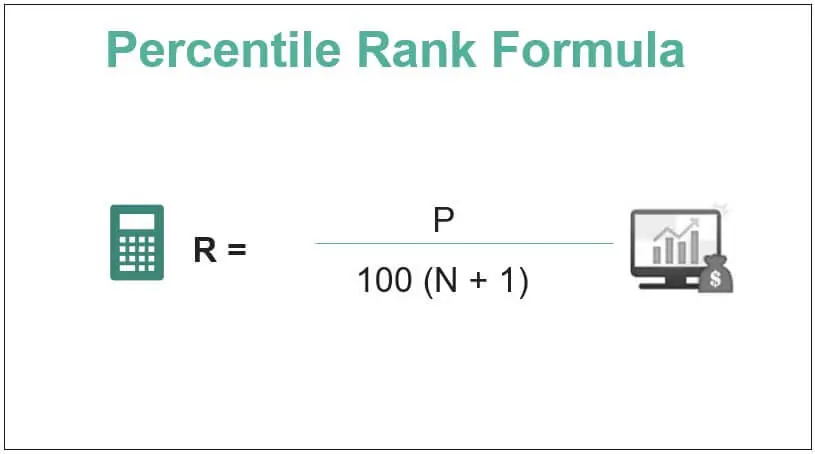Understanding where you stand academically in comparison to your peers can be a motivating factor for many students. Class rank percentage serves as a metric for evaluating a student’s performance relative to others within the same grade or major. It’s a valuable benchmark for college applications and scholarship opportunities. Calculating your class rank percentage doesn’t require advanced mathematical skills but does demand a clear method and accurate data. The process can seem daunting, but with the right approach, it can be straightforward. Here, we’ll explore various methods to compute your class rank percentage and provide tips to ensure the accuracy of your result.

First in Class
Class rank percentage often begins with identifying the top performer in the class. This method positions everyone else in relation to the class valedictorian or the student with the highest GPA.
Detailed Introduction
The “First in Class” method is the traditional way to establish a baseline for class rank percentage. Here, the student with the highest grade point average (GPA) is assigned the rank of one, and class rank percentages for all other students are calculated in relation to this top position.
Detailed Steps
- Identify the Top GPA: Gather information on all students’ GPAs and identify the student with the highest GPA.
- Assign Rank Number One: The student with the highest GPA is given the rank of one.
- Calculate Rank for Each Student: Determine each student’s position in descending order of their GPA.
- Determine Total Number of Students: Count the total number of students in the class.
- Calculate Percentage for Each Student: Divide each student’s rank by the total number of students, then multiply by 100 to get the rank percentage.
Summary
This method creates a clear academic hierarchy where each student can clearly see their position. However, one downside is that small differences in GPA can lead to significant rank changes, especially in larger classes.
GPA Distribution
In this method, ranks are sorted based on how the GPAs are spread out across the class. Here, the approach focuses less on a single top performer and more on the general performance trend of the class.
Detailed Introduction
“GPA Distribution” provides a perspective on where a student’s GPA falls within the range of the entire class. This method can offer a more nuanced view of one’s academic standing by highlighting clusters of high achievers, average performers, and those below average.
Detailed Steps
- List all GPAs: Create a list of all students’ GPAs.
- Sort GPAs in Descending Order: Arrange the GPAs from the highest to the lowest.
- Find the Range: Identify the highest and lowest GPAs to find the range.
- Divide into Percentiles: Divide the class into percentiles according to GPA.
- Assign Rank Based on Percentile: Students are given a rank based on the percentile group they fall into.
Summary
This approach offers insights into the distribution of GPAs, which can be more fair in comparing students. However, it’s less precise for individual rankings, as students within the same percentile share the same rank.
Equal Intervals
Ranking by “Equal Intervals” requires dividing the class GPA scale into equal parts to assign rankings accordingly.
Detailed Introduction
The “Equal Intervals” method takes into account the GPA range and splits it into equal segments. Each segment represents a rank category, allowing students to be grouped into these predefined sections.
Detailed Steps
- Determine the Highest and Lowest GPAs: Find the highest and lowest GPAs to understand the range.
- Divide the Range: Split the range into equal intervals, which will serve as rank categories.
- Categorize Each GPA: Assign each student’s GPA to the corresponding interval.
- Rank Within Intervals: Rank each student within their respective interval, based on their precise GPA.
Summary
This system simplifies class ranking by avoiding exact rank numbers for each student. The downside is that it may lump together students with diverse academic records, reducing individual rank specificity.
Weighted Class Rank
The “Weighted Class Rank” method takes into account not only GPA but also the difficulty of the courses each student has taken.
Detailed Introduction
For a more complex perspective, “Weighted Class Rank” adjusts GPAs based on course difficulty, offering a potentially fairer comparison among students who may have taken varying levels of challenging courses.
Detailed Steps
- Gather Course Information: Collect data on the level of difficulty for all courses.
- Calculate Weighted GPAs: Adjust students’ GPAs according to the difficulty of their courses.
- Rank Students: Assign rank using the weighted GPAs in descending order.
- Compute Percentage: Divide the rank by the total number of students and multiply by 100 to get the percentage.
Summary
This approach promotes a more balanced view of student performance, considering course rigor. However, the process can become complex and subjective, as it depends on the accurate weighting of courses.
Class Rank Curve
Using the “Class Rank Curve” method involves applying a statistical curve to the GPAs to assign rankings, similar to grading on a curve.
Detailed Introduction
A “Class Rank Curve” applies a statistical distribution, such as a bell curve, to normalize the ranking process, potentially benefiting students with scores close to the mean. This is often used to mitigate discrepancies caused by varying degrees of difficulty in tests or assignments.
Detailed Steps
- Calculate the Mean GPA: Find the average GPA of all students.
- Determine the Standard Deviation: Calculate the standard deviation, which measures the amount of variation in GPAs.
- Assign Ranks Based on Distribution: Use the mean and standard deviation to place students on a curve, then rank according to their position on this curve.
- Transform into Percentage: Convert the rank into a percentage based on where the student falls on the curve.
Summary
This can create a more forgiving ranking system that accommodates variations in performance, but it may disadvantage those who perform at the extremes, both high and low.
Bottom-Up Ranking
“Bottom-Up Ranking” starts from the student with the lowest GPA and works upward, establishing class rank percentage in reverse order.
Detailed Introduction
Taking an alternative view, “Bottom-Up Ranking” begins with the student who has the lowest GPA, assigning them the last rank, then proceeding to rank others in ascending order of their GPA.
Detailed Steps
- Identify the Lowest GPA: Begin with the student who has the lowest GPA.
- Assign the Last Rank: This student is assigned the last rank number.
- Rank Everyone Else: Proceed from the bottom up, ranking students with higher GPAs in ascending rank order.
- Calculate Percentages: Once ranks are assigned, calculate rank percentage by dividing individual ranks by the total number of students multiplied by 100.
Summary
This can help identify students who need the most academic support. However, it could potentially demotivate those at the lower end of the scale.
Community Comparison
Here, class rank isn’t just based within the school but is compared to known statistics of the wider educational community.
Detailed Introduction
“Community Comparison” looks beyond the confines of a single educational institution and compares a student’s rank within a broader context, such as the district or state.
Detailed Steps
- Collect External Data: Gather average GPA data from other schools or districts.
- Rank Within School: Rank students within your own school first.
- Adjust Ranks According to Community Data: Compare and adjust rankings in relation to the gathered data from the broader educational community.
- Compute Rank Percentages: Follow the same percentage calculation method, taking into account the expanded comparison group.
Summary
This approach gives students a perspective on how they stack up in a larger pool of peers, which can be encouraging for some but discouraging for others, depending on where they fall in the comparison.
Decile Ranking
Students are categorized into deciles, or 10% increments, instead of precise numerical ranks, simplifying the class rank percentage.
Detailed Introduction
Decile ranking breaks down the class into ten equal parts, assigning students to a decile based on their GPA. It’s a broader way to consider academic standing without focusing on individual rank.
Detailed Steps
- Arrange GPAs from High to Low: Sort all student GPAs.
- Divide Into Deciles: Split the list into ten equal parts based on the number of students.
- Assign Students to Deciles: Place each student into the appropriate decile based on their GPA position within the class.
- Determine Rank Percentage: Assign a rank percentage range to each decile (e.g., 1st decile is top 10%, 2nd decile is 20%, and so on).
Summary
This method offers a less stressful insight into class performance but sacrifices the granularity of individual ranks, which might be important for certain academic evaluations or programs.
Semester-by-Semester Analysis
Ranking can also be dynamic, changing from semester to semester to account for recent academic performance.
Detailed Introduction
“Semester-by-Semester Analysis” allows for a more fluid and potentially more accurate representation of a student’s progress by taking into account GPA changes over the course of different grading periods.
Detailed Steps
- Gather GPA Data per Semester: Collect students’ GPA data for each semester.
- Compute Cumulative GPA: Calculate each student’s cumulative GPA over time.
- Rank Based on Current GPA: Assign rankings based on the most recent cumulative GPA.
- Compute Percentage: Calculate class rank percentage based on the latest ranks.
Summary
This method reflects recent academic efforts, which can be particularly motivating. However, it may introduce more frequent fluctuations in rank, adding uncertainty.
Broad-tier Ranking
Class rank percentage can be simplified by using broad tiers, like quartiles, to categorize students rather than precise ranks.
Detailed Introduction
In a “Broad-tier Ranking” system, students are grouped into larger segments, such as quartiles, which represent four equal parts of the class based on GPA.
Detailed Steps
- List and Sort GPAs: Aggregate GPAs and sort them from high to low.
- Split Into Quartiles: Divide the student list into four equal sections.
- Place Students in Appropriate Quartile: Rank students within each quartile according to their exact GPA.
- Calculate Rank Percentage: Give each quartile a range, and distribute students in each quartile according to that range.
Summary
With “Broad-tier Ranking,” there’s less focus on exact rank, which may minimize competitiveness but also potentially obscure individual achievements.
Conclusion
Calculating class rank percentage provides a valuable snapshot of a student’s academic performance relative to their peers. We’ve looked at various methods, each with its benefits and potential drawbacks. Some emphasize individual achievement, while others focus on overall trends and distributions. The choice of method should align with your educational values and goals. Understanding these methods empowers students and educators to better grasp academic standing, guiding future efforts and opportunities.
Frequently Asked Questions
Q1: What is class rank percentage used for?
A1: Class rank percentage is often used for college admissions, academic awards, and scholarships. It helps institutions understand a student’s performance compared to others in the same grade or major.
Q2: Can class rank percentage change over time?
A2: Yes, class rank percentage may change as students’ GPAs fluctuate with each grading period. Consistent academic performance is key to maintaining or improving class rank.
Q3: How is weighted class rank different from unweighted class rank?
A3: Weighted class rank takes into account the difficulty of a student’s coursework, giving higher value to grades from more challenging classes. Unweighted class rank considers all grades to be equal, regardless of course difficulty.









